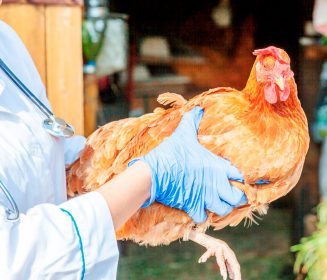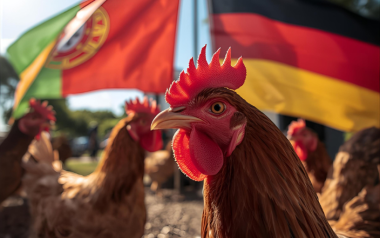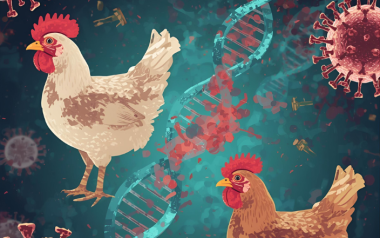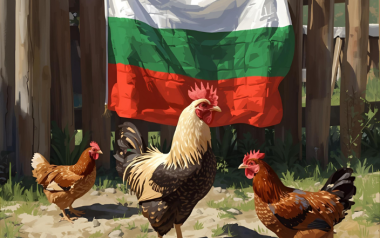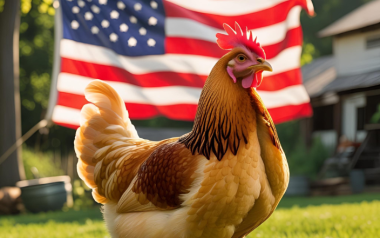Sources: Available upon request
02 Apr 2024
Aspergillosis in poultry: understanding the silent threat
Aspergillosis, a prevalent fungal disease, predominantly affects the respiratory systems of poultry such as chickens, turkeys, and occasionally other bird species like ducklings, pigeons, canaries, and geese.
Aspergillosis, a prevalent fungal disease, predominantly affects the respiratory systems of poultry such as chickens, turkeys, and occasionally other bird species like ducklings, pigeons, canaries, and geese. Despite its seemingly innocuous name, this condition poses significant challenges to aviculturists. Let’s delve into the details of this silent threat.
Etiology and Epidemiology
- Culprit Mold: The primary culprit behind aspergillosis is Aspergillus fumigatus, although other mold species like A. flavus, A. niger, Rhizopus spp, and occasionally Penicillium spp may also be involved.
- Transmission: Chicks and poults inhale large numbers of spores during hatching or when placed on bedding contaminated with mold spores. In older birds, infection occurs primarily through inhalation of spore-laden dust from contaminated litter, feed, or dusty range areas.
- Recurring Outbreaks: On some farms, the disease may reoccur in chickens and turkeys, while in wild birds, it appears sporadic, frequently affecting only individual birds.
Clinical Signs and Lesions
- Respiratory Distress: Sick birds display dyspnea (labored breathing) due to fungal invasion of the respiratory system.
- Stunted Growth: Aspergillosis leads to suppressed growth and overall poor health.
- Neurologic Form: In rare cases, a neurologic form may present, characterized by symptoms like torticollis (twisted neck) and tremors.
Gross Lesions
- Granulomatous Fungal Pneumonia: Numerous firm, white to yellow fungal granulomas are diffusely distributed throughout the lungs.
- Fungal Airsacculitis: The thoracic and abdominal airsacs exhibit numerous firm, white to tan fungal granulomas.
- Fungal Plague and Nodules: Large, flat, white fungal plaques and smaller nodules appear in the airsacs.
Diagnosis and Challenges
- Observation: Veterinarians diagnose aspergillosis by observing granulomas, typically in respiratory tissues.
- Confirmation: Culture or histopathology confirms the diagnosis.
- Treatment: Unfortunately, there is no specific treatment for aspergillosis. The key to control is to minimize exposure of birds to contaminated materials.
Prevention and Control Measures
- Biosecurity: Implement strict biosecurity measures to prevent contamination of litter, feed, and range areas.
- Ventilation Systems: Investigate air handling systems as potential sources of contamination.
- Avoid Dust Accumulation: Regularly clean and manage litter to minimize dust.
- Early Detection: Monitor birds closely for any signs of respiratory distress.
- Quarantine New Birds: Isolate new birds to prevent introduction of infected individuals.
Conclusion
Aspergillosis remains a challenge in aviculture, impacting both commercial poultry farms and backyard flocks. Vigilance, early detection, and proactive management are crucial to minimizing its impact. By understanding this silent threat, aviculturists can protect their feathered companions and ensure healthier flocks. Remember, knowledge and vigilance are our best tools in combating this hidden menace.








